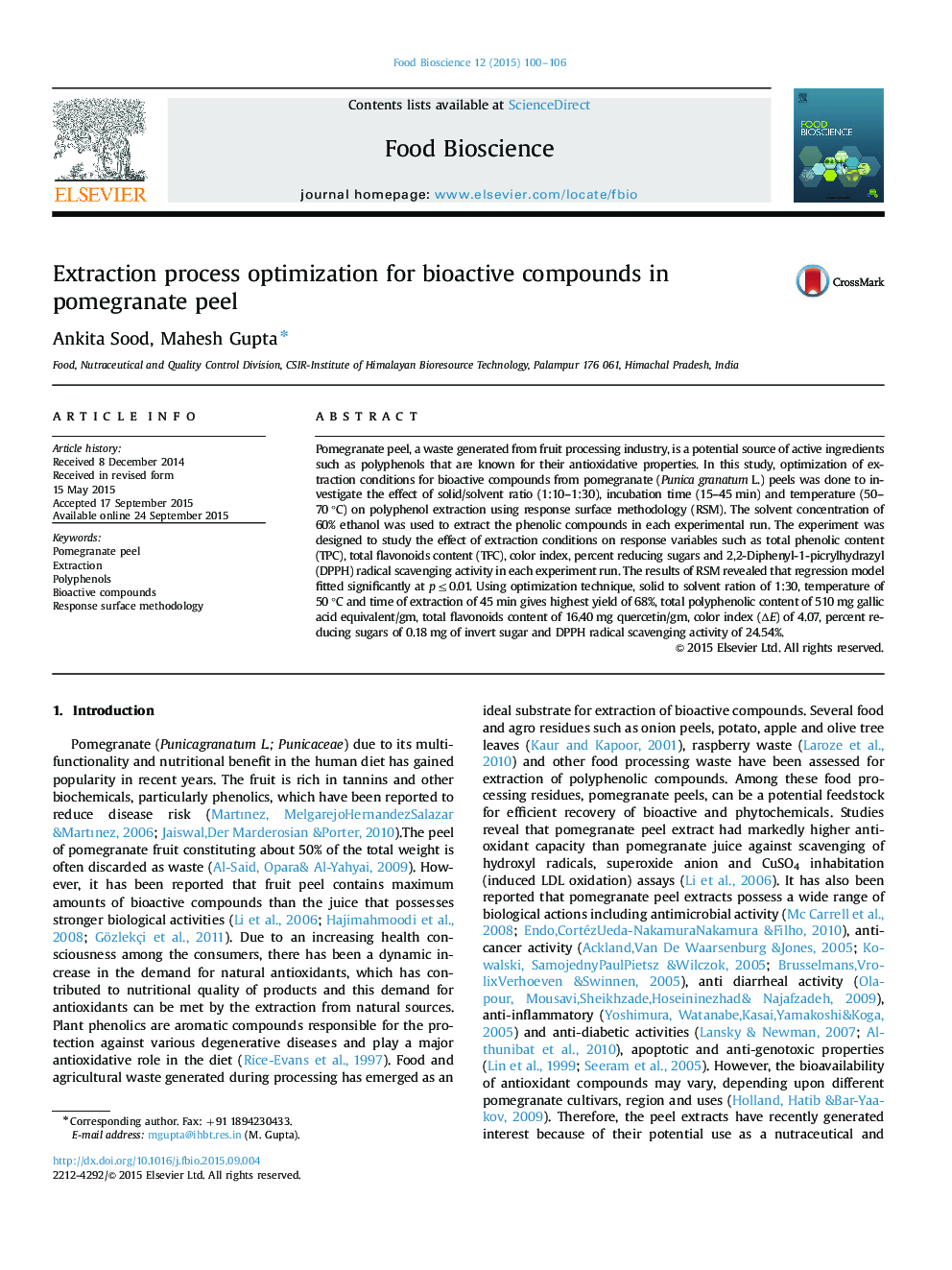| Article ID | Journal | Published Year | Pages | File Type |
|---|---|---|---|---|
| 19638 | Food Bioscience | 2015 | 7 Pages |
Pomegranate peel, a waste generated from fruit processing industry, is a potential source of active ingredients such as polyphenols that are known for their antioxidative properties. In this study, optimization of extraction conditions for bioactive compounds from pomegranate (Punica granatum L.) peels was done to investigate the effect of solid/solvent ratio (1:10–1:30), incubation time (15–45 min) and temperature (50–70 °C) on polyphenol extraction using response surface methodology (RSM). The solvent concentration of 60% ethanol was used to extract the phenolic compounds in each experimental run. The experiment was designed to study the effect of extraction conditions on response variables such as total phenolic content (TPC), total flavonoids content (TFC), color index, percent reducing sugars and 2,2-Diphenyl-1-picrylhydrazyl (DPPH) radical scavenging activity in each experiment run. The results of RSM revealed that regression model fitted significantly at p≤0.01. Using optimization technique, solid to solvent ration of 1:30, temperature of 50 °C and time of extraction of 45 min gives highest yield of 68%, total polyphenolic content of 510 mg gallic acid equivalent/gm, total flavonoids content of 16.40 mg quercetin/gm, color index (∆E) of 4.07, percent reducing sugars of 0.18 mg of invert sugar and DPPH radical scavenging activity of 24.54%.
